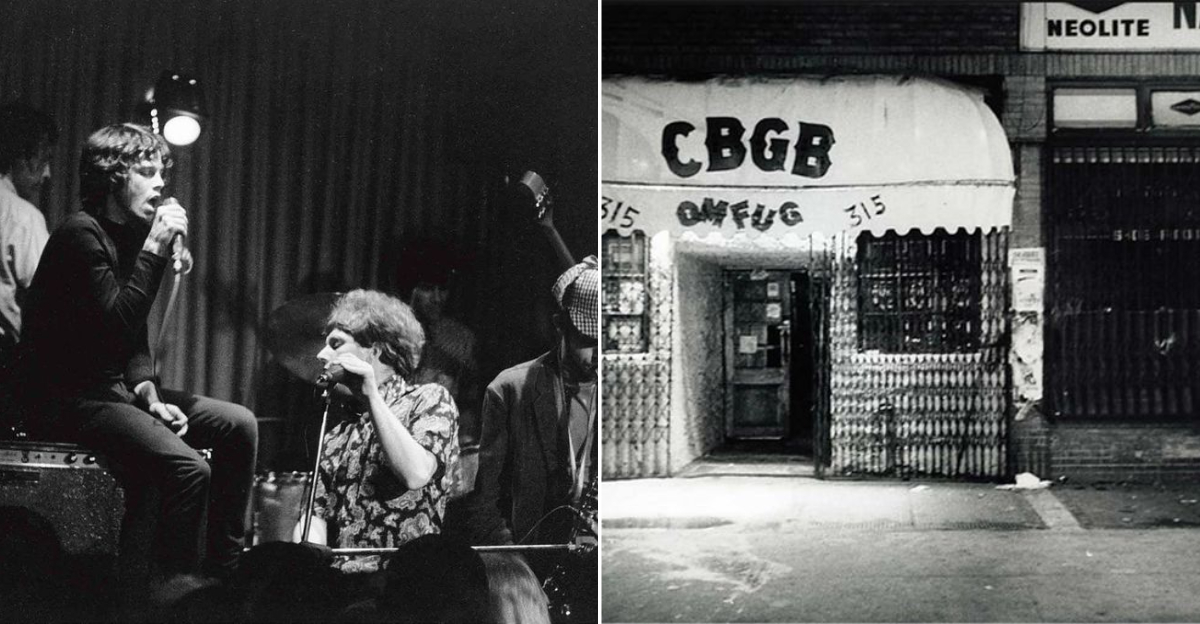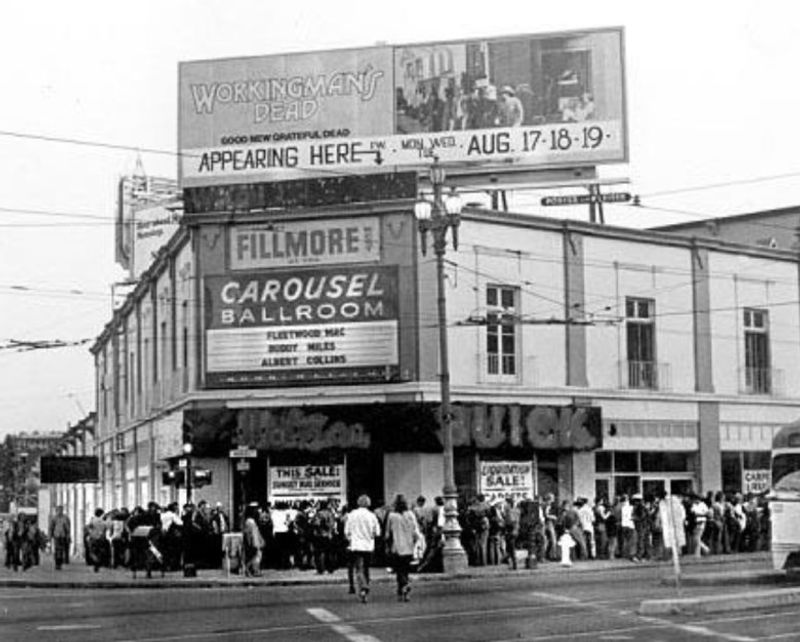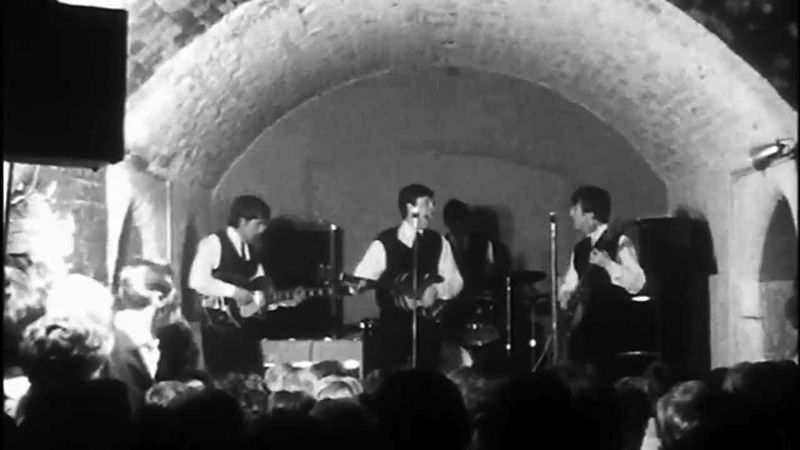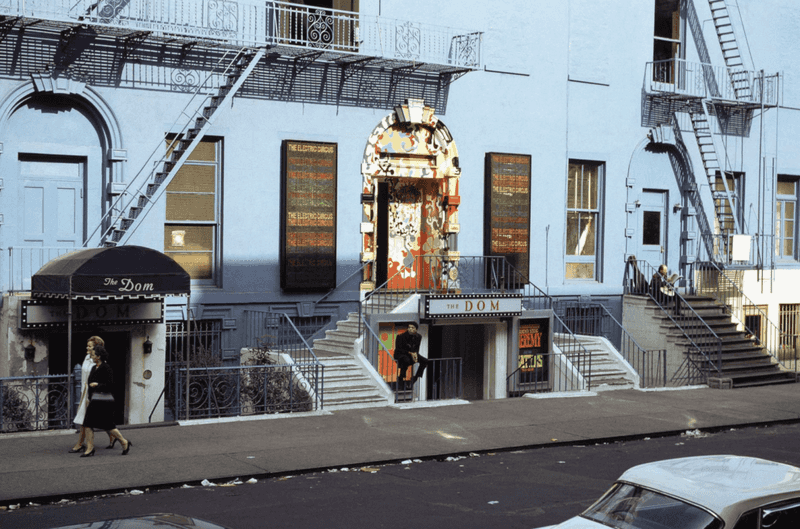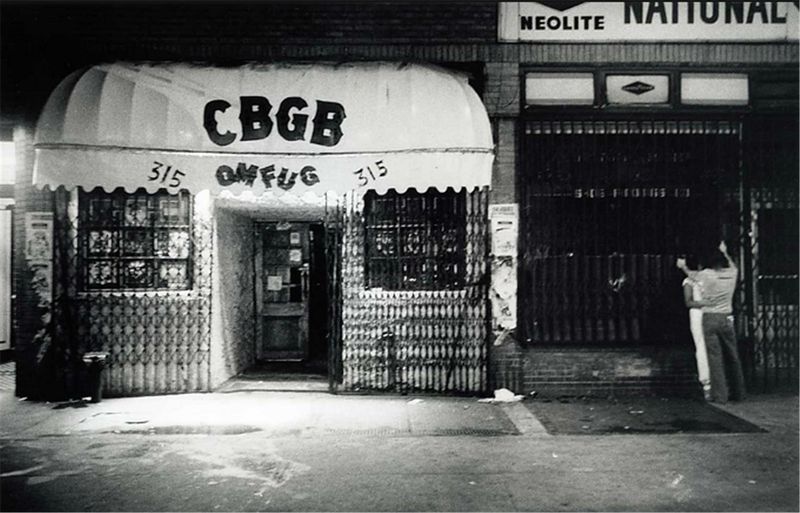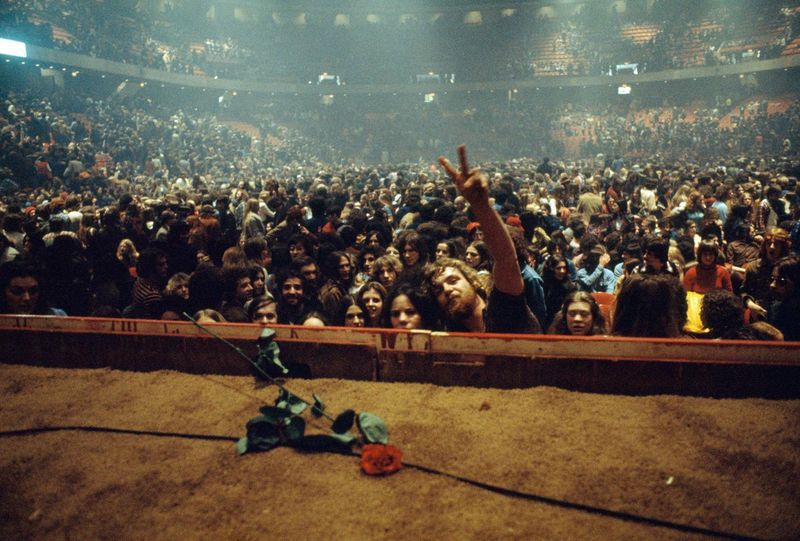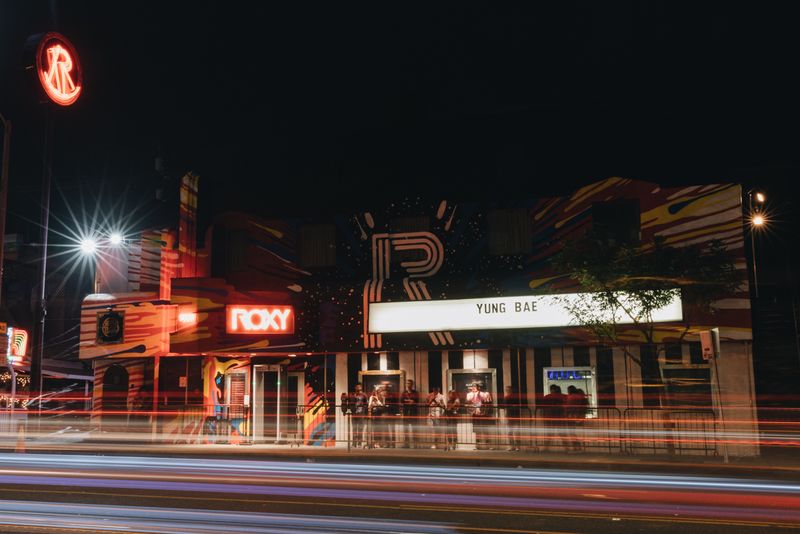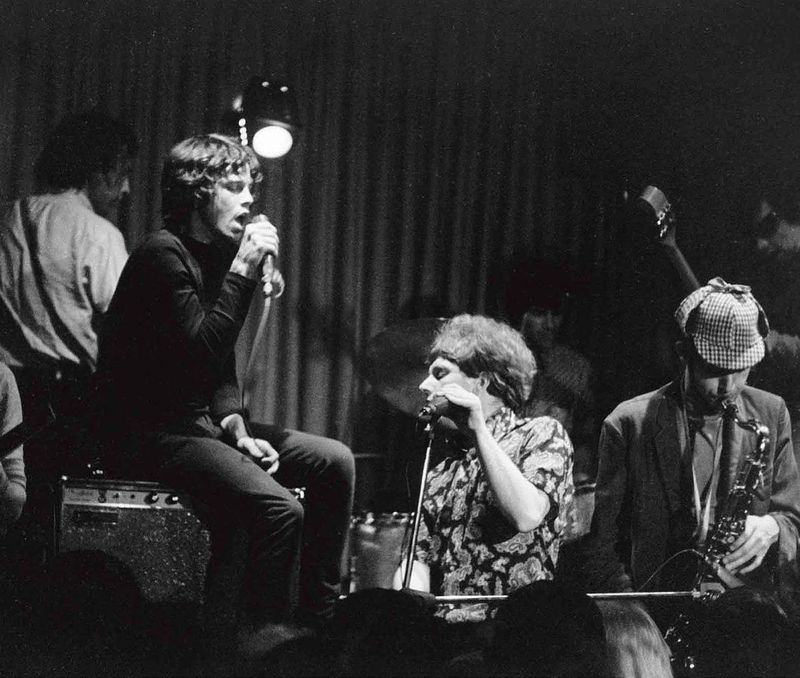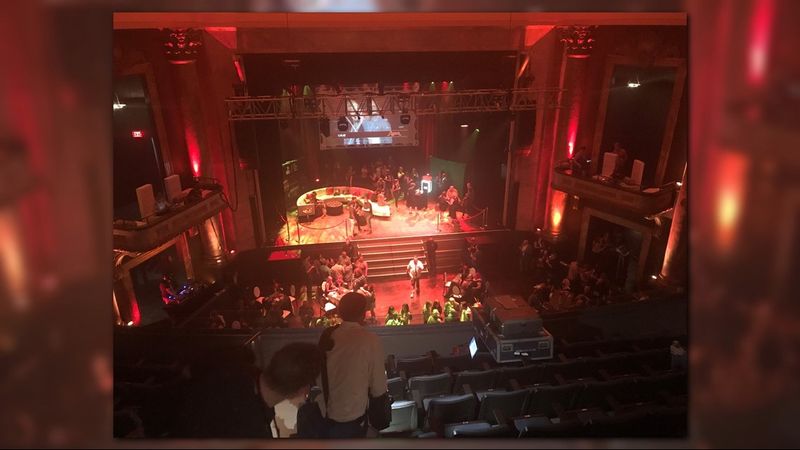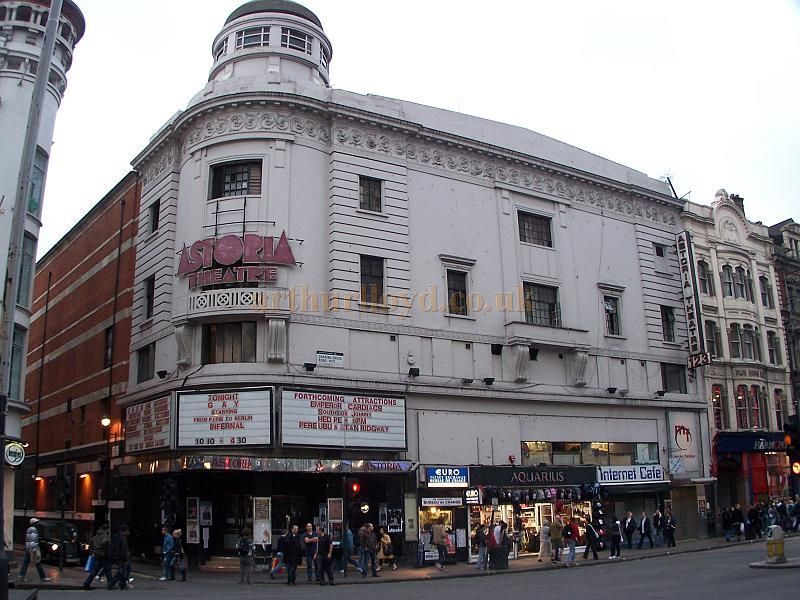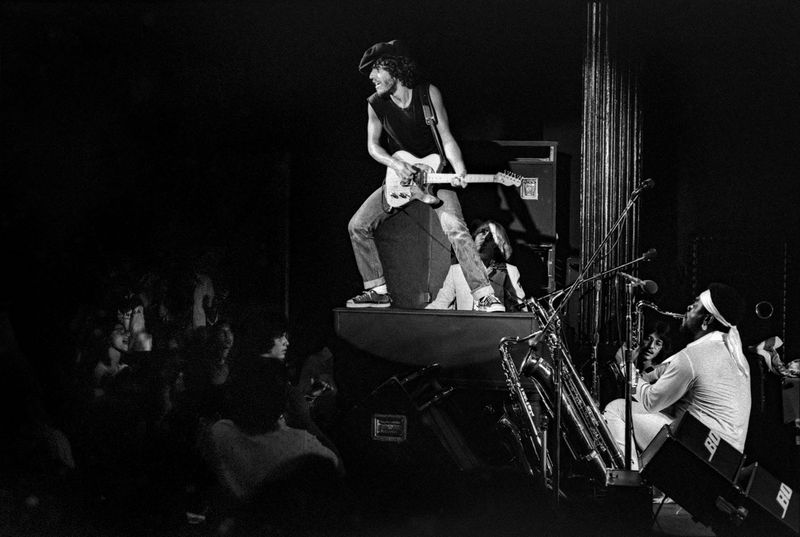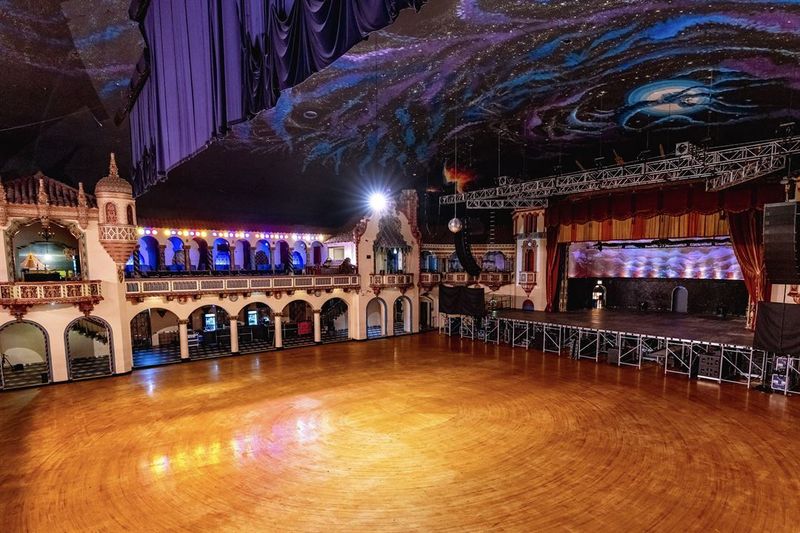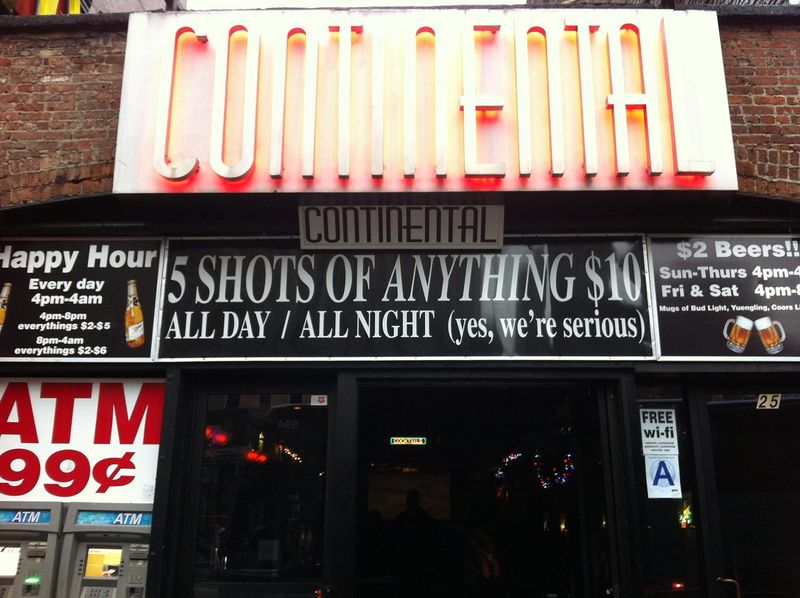The walls shook, the crowds roared, and legends were born—but now, silence fills the places where rock once reigned supreme. These 14 iconic venues weren’t just buildings; they were sacred ground for music lovers. Though they’ve closed their doors or fallen to the wrecking ball, the echoes of epic guitar solos and unforgettable nights live on.
1. The Fillmore West (San Francisco, CA)
The West Coast’s psychedelic hub, The Fillmore West, hosted legendary acts like Jimi Hendrix, Janis Joplin, and The Grateful Dead. The venue was a beacon of musical creativity and experimentation.
Promoter Bill Graham shaped modern concert culture from this very stage. Known for its eclectic mix of genres, The Fillmore West became a cultural melting pot.
Though it closed in 1971, the influence of The Fillmore West resonates in today’s live music scene, reminding us of a golden era of rock.
Music lovers still cherish memories of the unforgettable performances held there.
2. The Cavern Club (Original Location, Liverpool, UK)
The Beatles played nearly 300 times at The Cavern Club, turning this damp cellar into hallowed ground. Fans lined the narrow streets of Liverpool for a glimpse of history in the making.
Though rebuilt, the original Cavern where Beatlemania began was lost to demolition. The club became synonymous with the rise of the most famous band in the world.
Beatles enthusiasts from all corners of the globe still visit, captivated by the echoes of those early performances. It lives on in legend as the birthplace of modern music.
3. The Electric Circus (New York, NY)
A psychedelic spectacle, The Electric Circus mixed rock with performance art in a swirl of vibrant color and sound. Acts like The Velvet Underground and The Doors made it a surreal vortex of ‘60s culture.
The Electric Circus was a fresh canvas for artists to express unbridled creativity. The venue embodied the spirit of innovation and countercultural rebellion.
While its doors closed in 1971, its impact on the art and music scene remains profound. The memories of avant-garde performances linger in the annals of rock history.
4. Max’s Kansas City (New York, NY)
Max’s Kansas City was more than a club; it was a cultural meeting place for artists, musicians, and visionaries. Frequented by Warhol, Bowie, and Patti Smith, it was where glam met punk.
The gritty Manhattan institution was alive with the sounds of Lou Reed and other musical pioneers. Its vibrant energy inspired countless creative spirits.
Though it closed in 1981, its influence is felt in art and music worldwide. Max’s Kansas City remains a symbol of New York’s diverse and ever-evolving cultural landscape.
5. CBGB (New York, NY)
Punk’s birthplace and the launchpad for The Ramones, Blondie, and Talking Heads. CBGB started as a country, bluegrass, and blues venue but transformed into a gritty shrine to DIY rebellion. Inside, the walls echoed the raw energy of punk rock.
Its closing marked the end of an era for East Village counterculture. Fans mourned the loss, but the spirit of the music lived on in the hearts of many. A true cultural icon, CBGB inspired countless artists and music lovers.
The venue remains a symbol of rebellion and artistic freedom, forever etched in rock history.
6. The Spectrum (Philadelphia, PA)
A multi-purpose arena where classic rock thrived, The Spectrum hosted legends like Pink Floyd and Bruce Springsteen. It was a colossal stage for groundbreaking performances.
With its vast seating and electric atmosphere, The Spectrum became a landmark for music fans. The venue was a testament to the power of live rock music.
Though demolished in 2011, its legacy is cemented in Philadelphia’s cultural memory. Concert-goers fondly recall the epic shows that defined an era.
7. The Roxy (Los Angeles, CA)
The Roxy’s original soul is forever linked to the sounds of Neil Young, Bob Marley, and Van Morrison. The venue’s intimate setting offered fans an up-close experience with legendary artists.
Though still active, The Roxy has seen many closures, marking shifts in its storied history. Each reincarnation brings a new chapter while honoring its past.
Music lovers celebrate The Roxy for its historic performances and cultural impact. It remains a treasured gem of the Sunset Strip.
8. Whisky a Go Go Annex (Atlanta, GA)
Not to be confused with its famous LA namesake, Whisky a Go Go Annex in Atlanta was a short-lived haven for Southern rock. Lynyrd Skynyrd and The Allman Brothers Band graced its stage.
The venue resonated with the twang and soul of Southern music, offering a unique experience that captivated audiences. Although its doors closed in the ’70s, it left a lasting legacy.
Fans remember the Annex for its intimate atmosphere and raw, unfiltered performances. It embodied the essence of Southern rock culture.
9. The Agora Ballroom (Cleveland, OH)
Cleveland’s answer to CBGB, The Agora Ballroom, was a crucible of rock innovation. Iggy Pop, U2, and Bruce Springsteen tested new sounds on its hallowed stage.
The original location burned down, but the memories of its explosive shows linger. The Agora was a beacon of musical exploration and creative expression.
Fans fondly remember the venue’s unique energy and its role in shaping Cleveland’s vibrant rock scene. It stands as a symbol of artistic resilience.
10. The London Astoria (London, UK)
An intimate yet intense rock spot, The London Astoria shook with the sounds of Oasis, Radiohead, and Nirvana. Its raw energy and sweat-soaked crowds were legendary.
Though torn down for a train station, the Astoria’s spirit lives on in the music it championed. It was a breeding ground for alternative rock and emerging talent.
Fans cherish the venue’s vibrant past and the unforgettable nights that defined a generation. The Astoria remains a beacon of London’s rich musical heritage.
11. The Bottom Line (New York, NY)
The Bottom Line was where Bruce Springsteen began his ascent to legend, a space brimming with musical talent from Lou Reed to Billy Joel. It was a musician’s haven in the heart of New York.
NYU bought the space, but the venue’s spirit proved irreplaceable. The Bottom Line became synonymous with authentic musical experiences and groundbreaking performances.
Fans remember the intimate connection between artist and audience, a hallmark of its lasting legacy. It remains an indelible part of New York’s musical history.
12. Roseland Ballroom (New York, NY)
Originally a dance hall, Roseland Ballroom morphed into a powerhouse for rock concerts. Nirvana, The Rolling Stones, and Nine Inch Nails all graced its stage.
The venue’s transformation mirrored the evolution of music itself, adapting to the shifting tides of cultural trends. It was a dynamic space that embraced change.
Though razed for luxury condos in 2014, Roseland’s memory is immortalized in rock history. Concert-goers fondly recall the electric atmosphere and legendary performances.
13. The Aragon Ballroom (Chicago, IL)
Known for its “Moorish castle” decor, the Aragon Ballroom hosted Metallica, Slayer, and grunge tours in its echoing halls. The venue was steeped in musical history and architectural grandeur.
Though still occasionally used, its golden age is long gone. The Aragon was a cultural landmark that highlighted Chicago’s vibrant music scene.
Fans reminisce about the venue’s iconic performances and unique atmosphere. It remains a cherished piece of Chicago’s musical legacy.
14. Continental Club (New York, NY)
NYC’s Continental Club was a downtown punk and metal haven, where Guns N’ Roses, Green Day, and Iggy Pop electrified the stage. It was a beacon of rebellious spirit and vibrant music.
Noise complaints and gentrification eventually silenced it, but the club’s legacy endures. The Continental was a vital part of New York’s dynamic music scene.
Fans recall the raw, energetic performances that defined the club’s heyday. It remains a symbol of the city’s ever-changing cultural tapestry.
